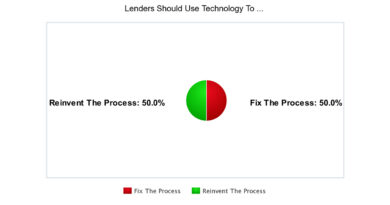Homeownership Still Unaffordable Across Most Of The U.S., But Declining Home Prices May Provide Relief
ATTOM released its third-quarter 2022 U.S. Home Affordability Report showing that median-priced single-family homes and condos remain less affordable in the third quarter of 2022 compared to historical averages in 99 percent of counties across the nation with enough data to analyze. That continues to be far above the 69 percent of counties that were historically less affordable in the third quarter of 2021 and marked yet another high point reached during the country’s 11-year housing market boom.
However, the report also shows some potential relief for homebuyers as the portion of average wages nationwide required for median major home-ownership expenses has dipped slightly from 30.9 percent in the second quarter of the year to 30 percent in the third quarter.
“Homeownership remains largely unaffordable for the majority of homebuyers in the majority of markets across the country,” said Rick Sharga, executive vice president of market intelligence at ATTOM. “While home prices have declined a bit quarter-over-quarter, they’re still higher than they were a year ago, and interest rates have essentially doubled. Many prospective homebuyers simply can’t afford the home they hoped to buy, and in many cases no longer qualify for the mortgage they’d need.”
The third-quarter figure does remain above the 28 percent ceiling lenders generally like to see when issuing a mortgage. It also is well above the 23.4 percent level from a year ago. But the current decline in the portion of wages needed to afford the typical home nationwide marks the first quarterly improvement in almost two years and comes as the median national single-family home price has taken a rare third-quarter fall. The latest median value of $340,000 is down 3 percent from the second quarter of 2022 – the first Spring-to-Summer decline since 2008.
The report determined affordability for average wage earners by calculating the amount of income needed to meet major monthly home ownership expenses — including mortgage, property taxes and insurance — on a median-priced single-family home, assuming a 20 percent down payment and a 28 percent maximum “front-end” debt-to-income ratio. That required income was then compared to annualized average weekly wage data from the Bureau of Labor Statistics (see full methodology below).
Compared to historical levels, median home prices in 574 of the 581 counties analyzed in the third quarter of 2022 are less affordable than in the past. The latest number is up from 568 of the same group of counties in the second quarter of 2022, 398 in the third quarter of 2021 and just 284, or less than half, two years ago. The increase has continued as the median national home price – despite dipping quarterly – is still up 10 percent over the past year, while average annual wages across the country have grown just 6 percent.
Affording a home remains slightly out of reach but may begin to get easier for average workers amid a time if significant headwinds stall or even reverse a boom in prices that dates back to 2012.
Some recent measures point to the market’s ongoing strength: prices are still historically high, home-seller profits have surpassed 50 percent and homeowner equity keeps rising across the country. That has happened as homebuyers continue chasing an extremely small supply of properties for sale. Elevated demand has helped push the national median home price up over the past year faster than the pace of wage growth.
But home sales are down as mortgage rates have steadily climbed this year from just above 3 percent to near 6 percent for a 30-year loan, driving up expenses for buyers. Higher interest rates, growing inflation, elevated fuel costs and a declining stock market all strain the finances of prospective homebuyers, and threaten to stall or reverse a nearly unrelenting rise in home values that began when the market started recovering in 2012 from Great Recession of the late 2000s.
Amid those mixed trends, major home-ownership expenses on typical homes are still unaffordable to average local wage earners during the third quarter of 2022 in 400, or 69 percent, of the 581 counties in the report, based on the 28-percent guideline. Counties with the largest populations that are unaffordable in the third quarter are Los Angeles County, CA; Maricopa County (Phoenix), AZ; San Diego County, CA; Orange County, CA (outside Los Angeles) and Kings County (Brooklyn), NY.
Home prices still up at least 10 percent annually in slight majority of country but dip quarterly in close to half
Median single-family home and condo prices in the third quarter of 2022 are up by at least 10 percent over the third quarter of 2021 in 302, or 52 percent, of the 581 counties included in the report. However, typical values have dropped from the second to the third quarter in 230, or 40 percent, of those counties, which has contributed to the nationwide decrease. Data was analyzed for counties with a population of at least 100,000 and at least 50 single-family home and condo sales in the third quarter of 2022.
“Home price appreciation has slowed dramatically in most markets – and there are even price corrections in some areas – as home sales have declined significantly over the past few months,” Sharga added. “But mortgage rates have risen more rapidly and dramatically than they have in several decades, and as a result a monthly mortgage payment today is 35-45 percent higher than a year ago, making affordability too much of a challenge for many would-be buyers.”
Among the 48 counties in the report with a population of at least 1 million, the biggest year-over-year gains in median sales prices during the third quarter of 2022 are in St. Louis County, MO (up 37 percent); Collin County (Plano), TX (up 25 percent); Hillsborough County (Tampa), FL (up 24 percent); Palm Beach County (West Palm Beach), FL (up 21 percent) and Tarrant County (Fort Worth), TX (up 19 percent).
Counties with a population of at least 1 million where median prices have stayed the same or gone up the least, year-over-year, during the third quarter of 2022 are Philadelphia County, PA (no change); Honolulu County, HI (up 1 percent); Alameda County (Oakland), CA (up 1 percent); Contra Costa County, CA (outside Oakland) (up 2 percent) and Cook County (Chicago), IL (up 2 percent).
Counties with a population of at least 1 million where median prices have dropped most from the second quarter of 2022 to the third quarter of 2022 are Alameda County (Oakland), CA (down 11 percent); Travis County (Austin), TX (down 9 percent); Santa Clara County (San Jose), CA (down 8 percent); Contra Costa County, CA (outside Oakland) (down 7 percent) and Fairfax County, VA (outside Washington, DC) (down 7 percent).
Annual price gains still outpacing wage growth in more than 80 percent of markets
Annual home-price appreciation has been greater than weekly annualized wage growth in the third quarter of 2022 in 488 of the 581 counties analyzed in the report (84 percent), with the largest including Los Angeles County, CA; Harris County (Houston), TX; Maricopa County (Phoenix), AZ; San Diego County, CA, and Orange County, CA (outside Los Angeles).
Average annualized wage growth has surpassed home-price appreciation in the third quarter of 2022 in only 93 of the counties in the report (17 percent). The largest of those counties include Cook County, (Chicago), IL; King County (Seattle), WA; Santa Clara County (San Jose), CA; Alameda County (Oakland), CA, and Philadelphia County, PA.
Share of wages needed for home ownership declining, but still exceeds 28 percent in two-thirds of the nation
The portion of average local wages consumed by major ownership costs on median-priced, single-family homes has decreased from the second to the third quarter of 2022 in 45 percent of the 581 counties analyzed, helping to drop the level nationwide. But the amount needed remains more than 28 percent of average local wages in 400 of those (69 percent), assuming a 20 percent down payment. That is up from the 66 percent figure in the second quarter of 2022 for the same group of counties and from 43 percent in the third quarter of last year.
Counties that require the largest percentage of wages are Kings County (Brooklyn), NY (106.1 percent of annualized weekly wages needed to buy a single-family home); Santa Cruz County, CA (98.9 percent); Marin County, CA (outside San Francisco) (96.1 percent); Napa County, CA (86.4 percent) and Monterey County, CA (84.5 percent).
Aside from Kings County, NY, counties with a population of at least 1 million where major ownership expenses typically consume more than 28 percent of average local wages in the third quarter of 2022 include Orange County, CA (outside Los Angeles) (76 percent); Queens County, NY (73.8 percent); Nassau County, NY (outside New York City) (67.2 percent) and Alameda County (Oakland), CA (67.2 percent).
Counties where the smallest portion of average local wages are required to afford the median-priced home during the third quarter of this year are Schuylkill County, PA (outside Allentown) (10.5 percent of annualized weekly wages needed to buy a home); Peoria County, IL (13.4 percent); Bibb County (Macon), GA (14 percent); Macon County (Decatur), IL (14.1 percent) and Rock Island County (Moline), IL (14.1 percent).
Counties with a population of at least 1 million where major ownership expenses typically consume less than 28 percent of average local wages in the third quarter of 2022 include Wayne County, (Detroit), MI (15.4 percent); Philadelphia County, PA (18.3 percent); Cuyahoga County (Cleveland), OH (18.4 percent); Allegheny County (Pittsburgh), PA (21 percent) and Cook County (Chicago), IL (24.4 percent).
Historic affordability inching upward but remains worse than historic averages in nearly all counties
Among the 581 counties analyzed in the report, 574 (99 percent) are less affordable in the third quarter of 2022 than their historic affordability averages. That is virtually the same as the 98 percent level in the second quarter of 2022, but up from 69 percent a year ago. Despite that, historic indexes have improved quarterly in 45 percent of those counties, helping to boost the nationwide index for the first time since late 2020.
Counties with a population of at least 1 million that are less affordable than their historic averages (indexes of less than 100 are considered less affordable compared to historic averages) include Wayne County (Detroit), MI (index of 60); Hillsborough County (Tampa), FL (60); Tarrant County (Fort Worth), TX (61); Maricopa County (Phoenix), AZ (61) and Collin County (Plano), TX (61).
Counties with the worst affordability indexes in the third quarter of 2022 are Clayton County, GA (outside Atlanta) (index of 47); Newton County, GA (outside Atlanta) (49); Rutherford County, TN (outside Nashville) (49); Canyon County, ID (outside Boise) (51) and Muskegon County, MI (outside Grand Rapids) (52).
Among counties with a population of at least 1 million, those where the affordability indexes have improved most from the second quarter of 2022 to the third quarter of 2022 are Alameda County (Oakland), CA (index up 12 percent); Travis County (Austin), TX (up 11 percent); Santa Clara County (San Jose), CA (up 8 percent); Contra Costa County, CA (outside Oakland) (up 8 percent) and Fairfax County, VA (outside Washington, DC) (up 8 percent).
Only 1 percent of markets are more affordable than historic averages
Among the 581 counties in the report, only seven (1 percent) are more affordable than their historic averages in the third quarter of 2022. That is down from 31 percent a year ago and 51 percent in the third quarter of 2020.
The only county with a population of at least 1 million that is more affordable than historic averages (indexes of more than 100 are considered more affordable compared to historic averages) is New York County (Manhattan), NY (index of 105).
Counties with the best affordability indexes in the third quarter of 2022 include San Francisco County, CA (index of 125); Macon County (Decatur), IL (122); Peoria County, IL (111); Schuylkill County, PA (outside Allentown) (108) and San Mateo County, CA (outside San Francisco) (106).

The Place for Lending Visionaries and Thought Leaders. We take you beyond the latest news and trends to help you grow your lending business.



